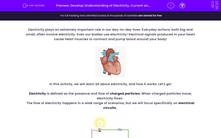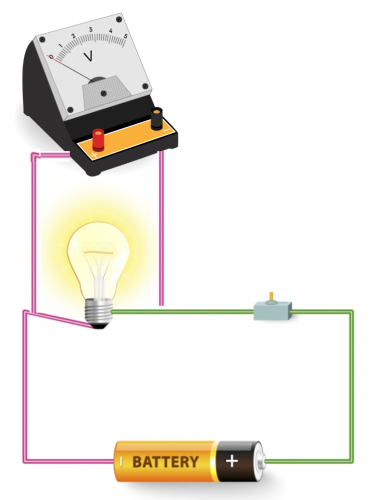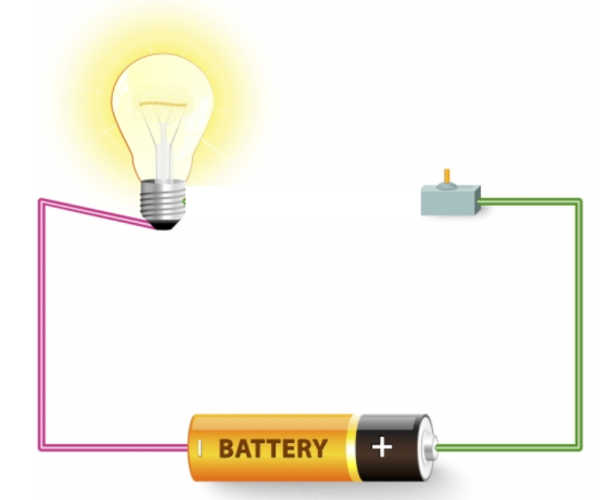Electricity plays an extremely important role in our day-to-day lives. Everyday actions, both big and small, often involve electricity. Even our bodies use electricity! Electrical signals produced in your heart cause heart muscles to contract and pump blood around your body!

In this activity, we will learn all about electricity, and how it works. Let's go!
Electricity is defined as the presence and flow of charged particles. When charged particles move, electricity flows.
The flow of electricity happens in a wide range of scenarios, but we will focus specifically on electrical circuits.

In electrical circuits, electricity flows through wires in a loop, as in the image above. Electrons, tiny charged particles that are found in atoms, are what flow around the circuit, through the wires.
To understand how circuits work more clearly, we have to understand two important key terms - current, and potential difference.
Potential difference is a measure of the difference in energy between two points in a circuit. Potential difference is measured in Volts (V).
For example, we could look at a battery in a circuit and see it labelled as 6 V. This battery provides more electrical energy than a battery that provides 3 V.

The greater the potential difference, the more energy is transferred by the battery or power source. This might mean that lamps connected to it would be brighter.
We measure potential difference in circuits using voltmeters. We connect the voltmeter to either side of the part of the circuit we are interested in, and the reading on the voltmeter tells us the difference in electrical energy across that part of the circuit.
Have you heard the key term voltage? Voltage and potential difference mean very similar things, and you might see them getting used in a similar way. We will primarily use the term potential difference.
Current in a circuit is the rate of flow of charged particles. When electrons move in a circuit, they cause a current because they are charged. The bigger the charge, or the faster the charges move, the greater the current.
In order for a current to flow in a circuit, two key things are needed:
1. A power supply or battery to provide energy
2. A complete circuit (in other words, no gaps in the circuit).
In the circuit shown above, there is no connecting wire between the bulb and the switch. The circuit is not complete, so no current will flow.
The unit we measure current in is Amps (A). We can measure current in a circuit using an ammeter.

Now that we understand some of the fundamentals of electricity, let's try some questions!










